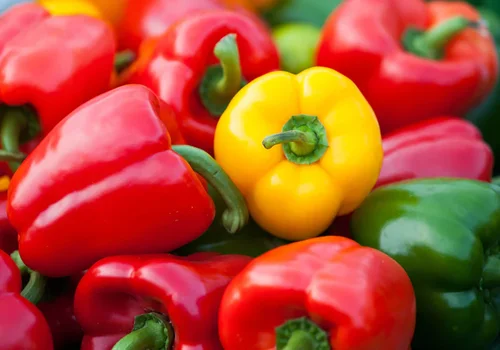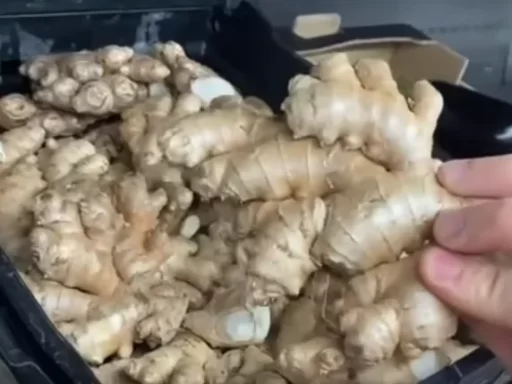As winter begins to fade, it’s the perfect time to start planning your garden. For some plants, getting a head start is crucial, especially for those that need a longer growing season like peppers and eggplants. In this article, we’ll explore how to get your garden started with early carrots, peppers, eggplants, and even a few surprises like strawberries. By beginning now, you’ll have healthy plants ready to thrive when the warm weather arrives.
Why Start Early?
Starting your garden early offers a few key advantages. First, you’ll extend the growing season, which is especially important for plants like peppers and eggplants that need more time to mature. Early sowing also means you can enjoy the sweetest, most tender vegetables before the main growing season even begins.
Some seeds, such as carrots, can tolerate cold weather and will germinate in their own time, while others, like peppers, need a bit of extra warmth to get started. Whether you’re using containers, cold frames, or indoor setups, there’s a way to give each plant the perfect start.
Early Carrots: Sweet and Simple
Carrots are one of the easiest crops to start early, even in the cooler months. There’s no need for rich soil; as long as it’s free-draining, your carrots will thrive. A great way to reuse old potting mix is to sift it through a sieve, removing any large debris. Add a bit of sand to improve drainage, then fill your pots with this rejuvenated mixture.
When sowing carrots in containers, scatter the seeds thinly over the surface. Cover them with a light layer of potting mix and place the pots in a cold frame or greenhouse. The elevated pots help prevent pests like carrot flies, which typically fly low to the ground. Early carrots are particularly sweet, so harvest them carefully, taking the largest ones first and leaving the smaller ones to grow on.
Tips for Growing Carrots:
- Use a deep pot for standard carrots, or choose smaller, stump-rooted varieties for shallower containers.
- Protect your seedlings by keeping them covered with a pane of glass or plastic to maintain humidity and warmth.
Starting Peppers Indoors for a Longer Season
Peppers, especially chili peppers, need warmth and time to thrive. Starting them early indoors will give you a head start, ensuring your plants are ready to flower and produce fruit by the time the weather warms up.

To start peppers indoors, use a free-draining potting mix. Avoid peat-based mixes, as they tend to hold too much moisture. Instead, combine a peat-free mix with coir (coconut fiber) and a small amount of vermiculite to create a light, well-draining medium.
When sowing pepper seeds, space them out individually in the pots. Label each variety clearly to avoid confusion later on. Cover the seeds with a light layer of soil and firm it down gently.
Tips for Growing Peppers:
- Keep your seedlings warm by placing them on a heat mat or a warm windowsill. Peppers germinate best at temperatures between 21-27°C (70-80°F).
- Use a humidity dome or cover the pots with plastic to trap warmth and humidity, which encourages faster germination.
Eggplants: A Warm-Season Favorite
Eggplants (also known as aubergines) require an even longer growing season than peppers, so starting them early is crucial. Choose a smaller-fruited variety to ensure you get a harvest, as these types tend to crop sooner.
Soak the seeds in lukewarm water for 24 hours before sowing to speed up germination. Like peppers, eggplants need a light, well-draining mix. Sow the seeds on the surface, cover lightly, and ensure the mix is moist.
Tips for Growing Eggplants:
- Use a heat mat to maintain a warm environment for germination.
- Once seedlings emerge, place them under grow lights to ensure they develop into strong, healthy plants.
Germinating Seeds Indoors: Using Heat Mats and Grow Lights
For plants like peppers and eggplants, which require warm soil to germinate, a heat mat is a valuable tool. Heat mats provide bottom heat, which is essential for maintaining consistent soil temperatures. Pair the heat mat with a humidity dome to increase humidity and warmth, ensuring optimal conditions for germination.
Once your seedlings emerge, move them under grow lights. Light is essential to prevent seedlings from becoming leggy and weak. Modern LED grow lights are affordable, energy-efficient, and provide the ideal light spectrum for young plants.
Tips for Using Grow Lights:
- Position grow lights close to the seedlings to encourage compact growth.
- Reflective materials, like white-backed cards, can help bounce light back onto the plants, ensuring even growth.
Growing Strawberries from Seed
Strawberries are a delightful addition to any garden, and while most people grow them from runners, you can also start them from seed. Choose a perpetual or everbearing variety, which will produce fruit throughout the summer.
Strawberry seeds are tiny and need light to germinate. Sprinkle them over the surface of a pre-moistened seed starting mix, mist them with water, and place them on a heat mat indoors. Keep the seeds moist, and once they’ve germinated, carefully transplant the seedlings into individual pots.
Tips for Growing Strawberries from Seed:
- Use a light mist to keep the seeds moist during germination.
- Transplant seedlings into their own pots once they’re large enough, and move them to a cooler area before gradually hardening them off for outdoor planting.
Conclusion
Starting your garden early can lead to a more successful growing season, especially for plants that need extra time to mature. Carrots, peppers, eggplants, and strawberries are all excellent choices for early sowing. By using techniques like heat mats, grow lights, and cold frames, you can ensure your plants have the best start possible.
Frequently Asked Questions
- When should I start sowing seeds indoors?
Start seeds indoors about 8-10 weeks before the last expected frost for your region. - What type of soil should I use for starting seeds?
Use a light, well-draining potting mix, preferably peat-free, combined with coir or vermiculite for extra drainage. - Do I need a heat mat to germinate seeds?
While not essential, a heat mat helps maintain consistent warmth, which is crucial for germinating warm-season crops like peppers and eggplants. - Can I grow peppers and eggplants without grow lights?
Yes, but they may become leggy if they don’t receive enough light. Grow lights provide the optimal conditions for healthy seedling growth. - How can I protect my early carrot seedlings from pests?
Growing carrots in containers and keeping them elevated can help avoid pests like carrot flies. - What’s the best way to start strawberries from seed?
Sprinkle strawberry seeds on the surface of a pre-moistened mix, and ensure they receive light for germination. - How long does it take for eggplants to germinate?
Eggplants usually take about 7-14 days to germinate when kept at a temperature of around 21-27°C (70-80°F).





